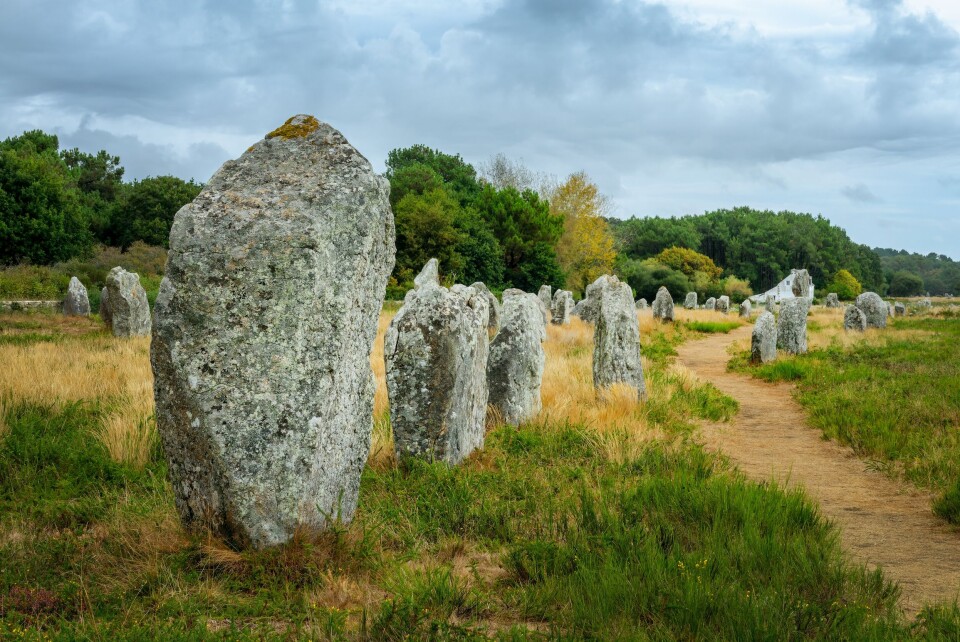-
British retiree cycles entire Tour de France route for charity
Dyll Davies, 66, rode 6,400km over 41 days
-
18 French departments launch service to help elderly with administrative procedures
‘Help desks’ will be set up in public establishments such as town halls and post offices
-
Graphic: One in five French workers employed in state sector
There are nearly six million workers in the ‘fonction publique’ in France, covering several areas
39 ancient menhirs moved to make way for a Mr. Bricolage in Brittany
Confusion has arisen over how planning permission was granted for the DIY store with a local archaeologist saying the move is ‘totally illegal’

A DIY store is being built on land that was previously home to 39 ancient menhirs (a prehistoric upright stone) in northwest France, it has emerged, prompting a local archaeologist to raise the alarm.
A Mr. Bricolage is currently being built on land in Carnac (Morbihan). And yet, the land’s former historical monuments had been recognised by the French regional cultural office la Drac (la Direction régionale des affaires culturelles).
It has emerged that planning permission for the site was granted on August 26, 2022, by the Mairie de Carnac.
À Carnac (#Morbihan), pour construire un magasin, 39 menhirs - pourtant identifiés par la Drac (Direction régionale des affaires culturelles) - ont été détruits 😡 #Bretagne
— Xavier Mauduit (@XavierMauduit) June 7, 2023
Un alignement d’explications est nécessaire !
👉 https://t.co/ORwAShzSmS pic.twitter.com/4UAhFRfdKK
Site of historical interest
This is despite the historical interest of the site, and neighbouring archaeological ground, having been acknowledged previously.
In December 2014, the same business - SAS Au marché des Druides - applied for planning permission on the neighbouring site, and the Morbihan prefecture said that an archaeological survey was required.
At the time, the conclusion was: “Due to their location, the planned works are likely to affect elements of the archaeological heritage.”
Preventative archaeological institute Inrap (l’Institut national de recherches archéologiques préventives) said in April 2015 that the site was likely home to "an unprecedented megalithic alignment", including two rows of 50-metre-long granite ‘stelae’, which are thought to be at least 7,000 years old.
Planning permission was refused at the time.
Well-known Breton archaeologist and Carnac resident, Christian Obelitz, said: "The small menhirs…were undoubtedly one of the oldest groups of stelae in the commune of Carnac, judging by the carbon-14 dating obtained in 2010 on the neighbouring site.”
‘Totally illegal’
Mr Obelitz first questioned the Mr Bricolage project on June 2. In an article on the Sites et Monuments page, he denounced the move as “totally illegal” and said that he wanted to “defend natural and built heritage”.
The Neolithic expert, who is also a researcher for the Centre national de la recherche scientifique (CNRS) in Nantes, said that “several brutal developments were carried out this winter and spring around the menhir alignments at Carnac, denaturing this world-famous site”.
Since 2015, the site has been mentioned in the Atlas des patrimoines {Heritage Atlas), which is a catalogue of current, notable archaeological sites maintained online by la Drac.
Mr Obelitz said: “This page has also been made so that officials can consult it before granting any planning permission.”
The land was also on a list to be considered as a World Heritage Site by Unesco, as part of a collection of 397 megaliths in Carnac and across Morbihan, across 27 communes.
Read more: Brittany’s historic stones vying for World Heritage status
How was planning permission granted?
When contacted by local newspaper Ouest-France, the mayor of Carnac, Olivier Lepick, said that he was not aware of the zone in question, and said that the issue was one for la Drac.
Mr Lepick is also chairman of Paysages des megalithes, which is supporting the application for UNESCO World Heritage status.
He said: “Planning permission is granted by the town council and the government. We're extremely attentive to this kind of thing, and we look at archaeological pre-registration zones. In this case, we have scrupulously complied with the legislation.”
‘Good faith’?
There does appear to be some confusion over the site’s status.
The Mairie said that la Drac had listed the area in a previous Plan d’occupation des sols (land use plane, POS), but that it did not figure in the current Plan local d'urbanisme (PLU). This may have been due to human error.
Stéphane Doriel, business manager at SAS Au marché des Druides, said that the process was done in “good faith”. He said: “I submitted a building permit, which was examined, posted and served the appeal periods. No department, no document, ever warned us of a problem.
“I'm not an archaeologist, I don't know menhirs. Low walls exist everywhere. If we'd known that, we'd obviously have done things differently”.
He said that he believed that planning permission in the neighbouring site had been refused because of wetland problems, not because of menhirs.
And yet, Mr Obelitz said he was sure that the move was illegal. He said: “The law is quite clear: any destruction of an archaeological site is punishable by a heavy fine.”
In 2013, the archaeologist said that he had warned la Drac that a building permit had been issued on the site of the Lann Granvillarec mound, another of the megalithic sites included in the Unesco listing project.
Work was halted at the time, and the building was eventually moved.
Carnac and its surrounding areas are home to around 4,000 menhirs. The stones are typically tall and placed upright, and thought to be associated with fertility.
While the term ‘menhir’ is typically used to describe French sites, it is also sometimes used in reference to the stones at other famous locations, such as Stonehenge in Wiltshire, UK.
Read also
Brittany's new 'Stonehenge' site will reconnect us to roots
Can you help lift up first stone at Brittany's new 'Stonehenge' site?
























